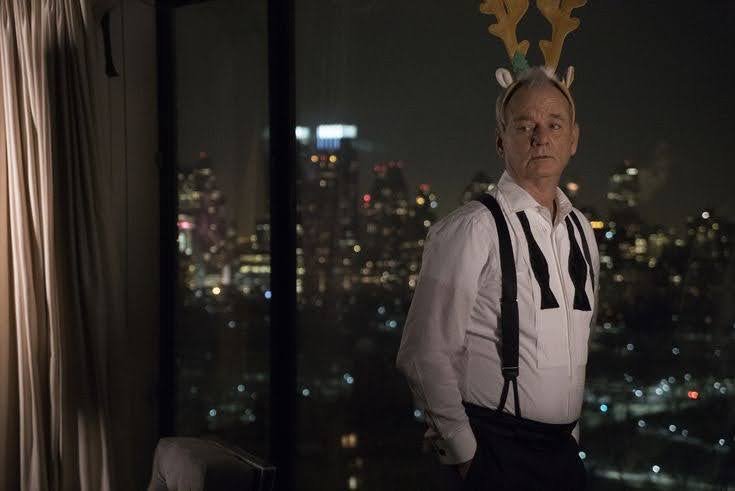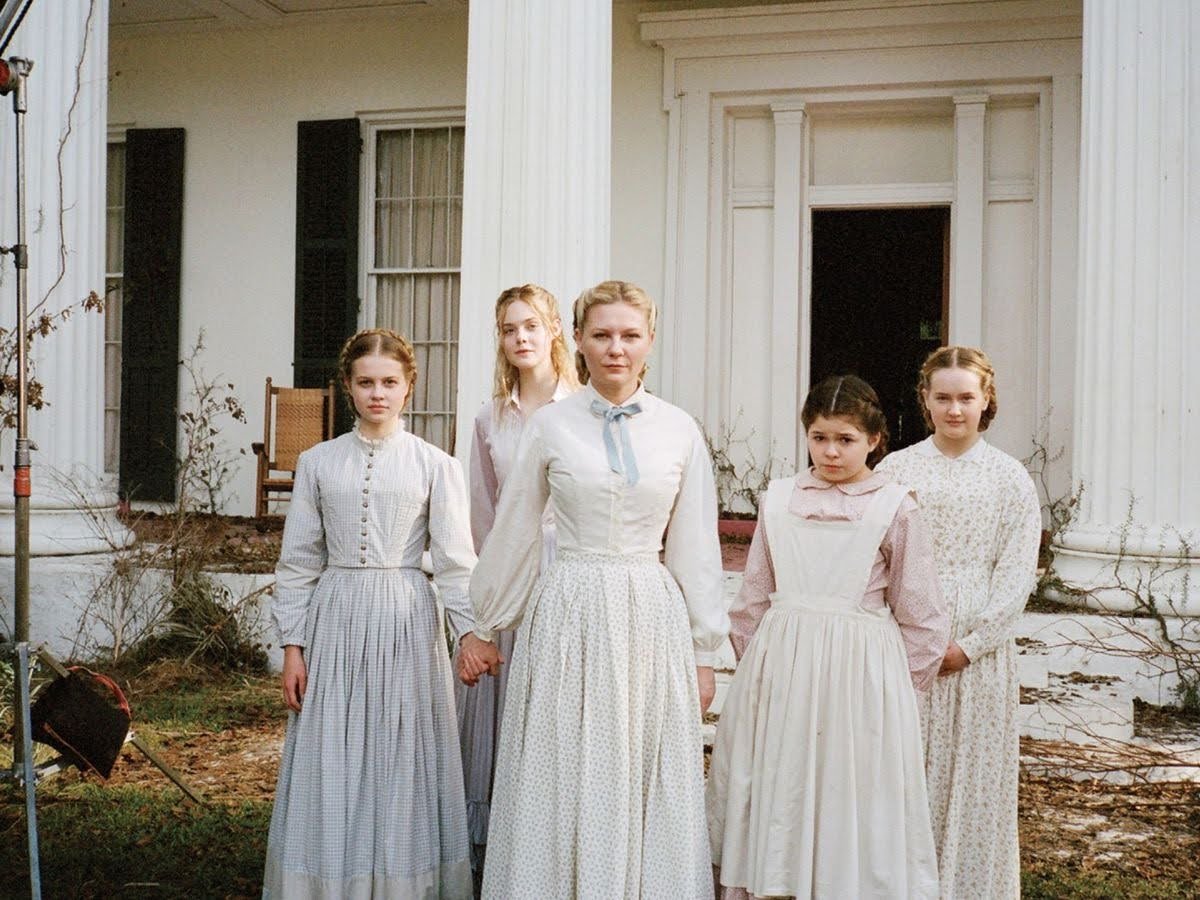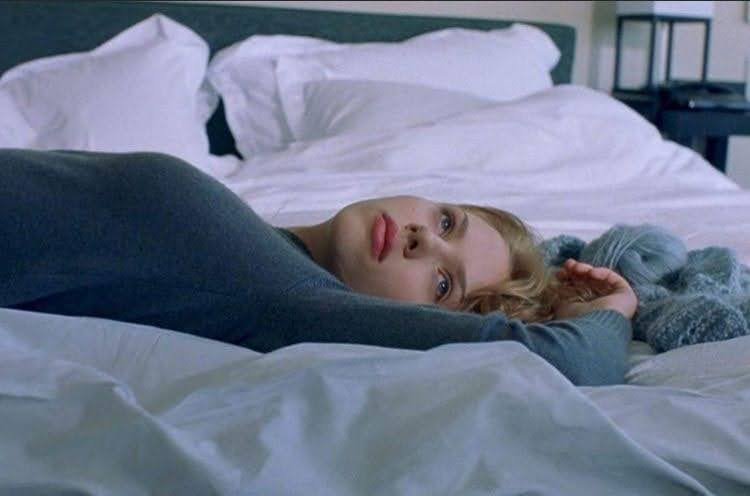Sofia Coppola Movies, Ranked
Tied into a bow with a delicate satin ribbon and vintage pearls is the sanctity, pureness, warm, inviting, loving embraces and beautiful complexities of the gift that is girlhood wrapped up into a motion picture written and directed by Sofia Coppola.
This is the gift that audiences have been receiving ever since the beginning of Coppola's earlier work with iconic projects from the late 90s up until now from her latest buzz with Priscilla. Coppola always gets it right, and her 25-year track record continues to show her effortless consistency, remarkable taste and distinctive place in contemporary artistic repertoire.
While framing the narrative of Coppola’s characters including her most recent Pricilla Presley, Coppola utilizes a “sad girl lens” which puts audiences at eye level with young women in gilded ages, making you feel young, beautiful and sad -- part of the reason for her cult fan following.
Whether it’s the luxurious melancholy seen on the grounds of Versailles, the two-story suburban home run by overprotective catholic parents, a luxury hotel in Tokyo, or the confines of Graceland, Coppola communicates a consistent language and influence of the iconography of female melancholy. In creating a potent, hypnotic allure to the sad girl status, there is no doubt of her evolution into the status of an icon.
This icon status is especially seen in her major collaborations with designer Marc Jacobs and Ava Nope. Inspired by Coppola’s 1999 hit film The Virgin Suicides, Marc Jacobs's diffusion line, Heaven, held an exhibition offering a look into the making of the film with elements of the production. Alongside this collaboration, Heaven released a collection paying homage to the film. Pieces included a mesh long sleeve and hoodie with iconic stills of Dunst as well as a silk shirt, button-down shirt, cross body and an emerald green blazer. Like most of Coppola’s films, The Virgin Suicides has distinctive clothing pieces throughout the movie that remain iconic and prove her ability to expand her tastes beyond her filmmaking and into the fashion world.
Coppola’s vision and flag of identity has been established as a cultural canon giving her the ability to navigate the intersection of cinema, fashion and music, frequently drawing inspiration to fuel the innovation in one another, all while exploring the complexities of girlhood and power of narrative.
Presented below, is every movie in her beautiful, intimate and inspiring filmography ranked.
Image Courtesy: Pinterest
9. A Very Murray Christmas (2015)
Come on Coppola and Murray! We know you two are better than this. A reunion years after their collaboration which received critical acclaim in the early 00s via Lost In Translation seemed promising, but not the best execution of what a Christmas special should entail. Regardless of the cheeky cameos including features from Miley Cyrus and Michael Cera, it can be a fun watch during the Christmas season.
Image Courtesy: Pinterest
8. On the Rocks (2020)
Suspected of marriage doubts, a young New York mother Laura (Rashida Jones) and flamboyant father Felix (Bill Murray) team up to check if her husband Dean (Marlon Wayans) is cheating on her. With Coppola’s comic writing, it’s easy to overlook the pain and loneliness that she masters at establishing within the characters. There are some endearing father-daughter moments, but there seems to be an inconsistent focus on the relationship which unfortunately makes the film feel like one of her more lackluster works.
7. The Beguiled (2017)
Coppola takes inspiration from the minimalist Civil War drama of Thomas P. Culihan’s novel and Don Siegel’s 1971 rendition starring Clint Eastwood but adds her touch by telling the story from its female characters. In a 2017 interview, she said, “It’s a story about strong women, and I wanted to look at these characters in more depth. You don’t really know as much about them”.
This moody thriller stars Nicole Kidman as the headmistress of an abandoned girl’s school, a wounded soldier (Colin Farrell), Elle Fanning and Kirsten Dunst who both play young, sheltered women who lust over the soldier. Coppola does a fabulous job with the atmosphere of the film, committing to the feel of isolation and femininity that define her work, using gauzy lighting and unexpected silence for the sense of foreboding mystery. This is one of Coppola’s more interesting works to look into especially if you enjoy a suspense-based and Western-style period piece.
Image Courtesy: Pinterest
6. The Bling Ring (2013)
The witty, campy, satirical, 2013 film The Bling Ring, achieves what it sets out to do and has a lot to love. Adapted from a Vanity Fair article about the teens who led the Hollywood Hills robberies of their favorite celebrities in the late 00s, Coppola sticks to defining the culture and characters driven by materialism and superficiality. Although this film has a more detached style almost like a docudrama, this still has Coppola’s touch all over it. There is no major character development or strong narrative structure, but it seems intentional, aligning with core themes. It seems that Coppola wished to execute the aesthetics of the emptiness in idolizing your celebrities, and the lifestyle these teens so desperately wanted to live. This specific style from Coppola where she offers these “flat” or mundane moments in silence delves into the portraits of her characters poetically and in this case, makes a radical statement against the celebrity culture she was growing up around.
Apart from Coppola’s interesting approach, there are some of the most outwardly satirical moments in her career, combined with a deluded spoiled brat closely resembling Alexis Niers played by Emma Watson, making for an entertaining and interesting telling of the story and tragedy of these teenagers' lives. We are even treated to a fantastic soundtrack including Azealia Banks, M.I.A, OPN, and Frank Ocean in addition to celebrity cameos including Paris Hilton and her real Hollywood mansion. There is a lot to love here, so I say check it out and be glad you weren’t as delusional as these teens were.
Image Courtesy: Pinterest
5. Somewhere (2010)
Coppola’s film Somewhere is driven by more of her style, akin to her cult fan following. Although this isn’t one of her more highly regarded films, the strong emphasis on visual imagery, lack of dialogue, and slower pacing than her other works, create an effective and beautiful expression of the character Johnny Marco (Stephen Dorff) and his growing relationship with his daughter Cleo (Elle Fanning). Throughout the film, there is a monotony of the emptiness in Johnny’s Hollywood life with each long take carefully capturing each vacant expression.
With the presence of Johnny’s 11-year-old daughter Cleo who has nothing but unconditional love for her distant father, there is a sense of hopelessness while the narrative unfolds and Johnny must confront his habits of escapism. Coppola’s exquisite use of slowness throughout suits this emotional development perfectly. Overall, this is a genuine and touching film, perhaps Coppola’s most quietest and personal.
Image Courtesy: Pinterest
4. Marie Antoinette (2006)
From the breathtaking costumes, sets, cinematography and pastel colors, everything in Coppola's Marie Antoinette is pure eye candy. Starring Coppola's muse Kirsten Dunst, this period piece presents the splendors of young Marie Antoinette’s life. Coppola explores the nature of a girl who is placed in a new environment feeling empty and filling the void with extravagant celebrations, compulsive purchases and temporary pleasures. Again, this is a stunning work of art from Coppola, using her expertise to hit the nail on the head with a poetic, candid approach to capturing girlhood.
This film seems to most likely have greater praise and intrigue from her cult following due to the parallels Coppola draws to modern life, and themes of isolation which are shown through the majority of shots being in Versailles. This wasn't a historical film on the political issues and suffering of the French people of the 18th Century. This was a film showcasing the elaborate customs and costumes of the lavish world Marie Antoinette was thrust into –just as Coppola intended. The film features a slightly controversial modern, post-punk soundtrack with exciting tracks from Siouxsie and the Banshees, The Strokes, New Order and Aphex Twin. With the meticulous detail, and expertise poured into this dreamy, pastel, glittering work, it is truly a Coppola masterpiece.
3. Priscilla (2023)
At the beginning of November, audiences were given access to Coppola’s privileged confines and adaptation of Priscilla Presly’s memoir, “Elvis and Me”. It’s the story of a naive, 14-year-old American girl living with her parents on a US military base in Germany in 1959, who is invited to a party at Elvis’ estate at Graceland. It is also the story of how after not too long, Elvis began to treat Priscilla as a precious object, giving her all she wanted at his estate except for her freedom. Like many others of Coppola’s characters, Priscilla is a hopelessly enamored girl navigating between both a life that is “her own” or one she was born into, coincided by something out of the impossible where events unfolded upon her seamlessly.
Coppola doesn’t use the typical biopic formula in the film, instead portraying Elvis’ legendary character through the lens of a woman so close to him. Cailee Spaeny who plays the lead, delivers a powerful and stunning performance showing us the rise and fall of their relationship in such honesty. We see a version of a girl greatly controlled by what she believes is real love at first, and the hope that this love will turn into something worthy for her, only to realize that it all resulted in her being controlled by a gaslighting, narcissistic freak.
Coppola’s portrayal of Elvis and Pricilla’s relationship evokes a strong response from audiences, specifically women who may catch themselves in a mirrored reflection of Priscilla’s actions (or lack thereof). “Just leave him!”, we jokingly shout at the screen, but sometimes just like Priscilla, we trap ourselves; and feel an eagerness for the liberation that Priscilla eventually finds herself feeling.
2. Lost In Translation (2003)
Coppola’s beautiful, melancholy, quiet and meaningful 2003 Lost In Translation has an ambiance perfect for comfort. It's a film that you can keep coming back to discovering more beauty and a deeper connection to each time. In this piece, Coppola goes for a thematic slice-of-life approach, establishing the importance of deep emotional human connection while feeling completely lost both mentally, and within foreign surroundings of Japan. Both characters Bob (Bill Murray) and Charlotte (Scarlett Johansson) are uncertain of their lives looking for more purpose, finding some familiarity in one another.
Coppola rejects the need for a central moral, instead focusing on creating emotional effect and mood by exploring the loneliness of two strangers from different walks of life. I believe this is one of Coppola's best works in which we see a beautiful execution in her earlier years as a filmmaker exploring both loneliness and solitude. There might be a sense that something is missing after the first watch, but you will soon begin to feel that void come to a close, perhaps from a reflection upon one of your relationships.
Image Courtesy: Pinterest
1. The Virgin Suicides (1999)
With this debut feature, Coppola’s dreamy, subversive take on feminine mystique was the first work from her career to give us a glance at her now, distinct style and tone. An adaptation of Jefferey Eugenides's novel The Virgin Suicides displays the melancholy and teenage isolation in the story of the five Lisbon sister suicides told through a collective group of men who were lonely, horny, obsessive boys at the time still uncertain and eager to understand what happened. Through an alluring performance by Kirsten Dunst, a dreamy, atmospheric score by Air, and the beautiful cinematography by Ed Lachman Coppola aims for a mysterious and ethereal vision to mask the shocking tragedy of a teenage coming-of-age movie.
From the beautiful vintage clothing, the X-ray vision shot of Lux’s underwear written “Trip” on them, the colors, hand-drawn title cards introducing each character, or each one of the sister’s belongings being so personal Coppola infuses a great amount of artistic style in each shot, and we feel everything she intends to allow us. Coppola has said that, for her, The Virgin Suicides is about “how deeply people can affect you and how little images can get the biggest importance, and never go away”. In doing so, Coppola captures female adolescence in a way I have not seen in a film before.
Every visual and music choice is perfect, creating a dreamy concoction of mystery, longing, sex and beauty. Coppola evokes an effect so strong in audiences that even long after a viewing of the film, I can still hear Air’s Magic Man playing while Trip Fontaine walks through the hallways, an iconic quote kept from the book, “It doesn’t matter in the end how old they had been, or that they were girls, but only that we had loved them, and that they hadn’t heard us calling, still do not hear us, up here in the treehouse, with our thinning hair and soft bellies, calling them out of those rooms where they went to be alone for all time, alone in suicide, which is deeper than death, and where we will ever find the pieces to put them back together”.
Strike Out,
Writer: Sydni Torrero
Edited by: Delaney Gunnell and Olivia Wagner
Orlando










